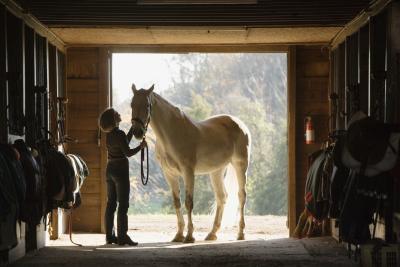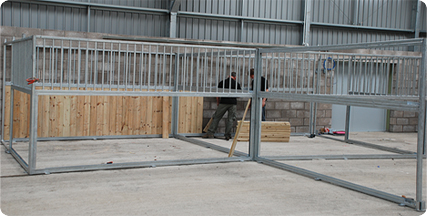Be Prepared For An Equine Health Emergency
If you hold horses long enough, sooner or later you are possible to confront a medical urgent situation. From lacerations to colic to foaling difficulties, there are many emergencies that a horse owner may run into. You have to know how to distinguish serious problems and react promptly, taking appropriate action while awaiting the arrival of your veterinarian.
Preparation is critical when confronted with a medical emergency. No matter the situation you may face, mentally rehearse the steps you will take to avoid letting panic take control. Follow these suggestions from the American Association of Equine Practitioners (AAEP) to assist you get ready for an equine emergency:
1. Store your veterinarian's number by every phone, including how the practitioner can be reached after hours.
2. Talk to with your regular veterinarian regarding a back up or referring veterinarian's number in case you cannot reach your regular veterinarian quickly enough.
3. Recognize in advance the most direct way to an equine surgery center in case you need to transport the horse.
4. Post the names and phone numbers of nearby friends and neighbors who can help you in an emergency while you wait for the veterinarian.
5. Prepare a first aid kit and store it in a hygienic, dry, readily accessible place. Make sure that family members and other barn users know where the kit is. Also keep a first aid kit in your horse trailer or towing vehicle, and a pared-down version to carry on the trail.
First aid kits can be simple or elaborate. Here is a short list of important items:
Cotton roll
Cling wrap
Gauze pads, in assorted sizes
Sharp scissors
Cup or container
Rectal thermometer with string and clip attached
Surgical scrub and antiseptic solution
Saline solution
Stethoscope
Clippers
Numerous incidents can be prevented by taking the time to evaluate your horse's environment and removing potential hazards. Mentally rehearse your emergency action plan. In an emergency, time is critical. Don't be concerned with overreacting or annoying your veterinarian. By acting quickly and promptly, you can minimize the consequences of an injury or illness. For more information about emergency care, ask your equine veterinarian for the "Emergency Care" brochure, provided by the AAEP in partnership with Educational Partner Bayer Animal Health.
Every day veterinarians across the country see hundreds of cases of laminitis, a painful disease that affects the feet of horses. Laminitis results from the disruption of blood flow to the sensitive and insensitive laminae within the foot, which secure the coffin bone to the hoof wall. While the exact mechanisms by which the feet are damaged remain a mystery, certain precipitating events can produce laminitis. Although laminitis occurs in the feet, the underlying cause is often a disturbance elsewhere in the horse's body.
The American Association of Equine Practitioners, headquartered in Lexington, Ky., was founded in 1954 as a non-profit organization dedicated to the health and welfare of the horse. Currently, the AAEP reaches more than 5 million horse owners through its over 9,000 members worldwide and is actively involved in ethics issues, practice management, research and continuing education in the equine veterinary profession and horse industry.

 How to Pick a Winning Horse at the Race Track
How to Pick a Winning Horse at the Race Track
How to Pick a Winning Horse at the Race Track
How to Pick a Winning Horse at the Race Track
 Wood Types for Horse Stalls
Wood Types for Horse Stalls
Wood Types
Wood Types for Horse Stalls
Wood Types for Horse Stalls
Wood Types
 How Customized Steel Stables Are Beneficial?
Choosing the place for the horses and constructing it for th
How Customized Steel Stables Are Beneficial?
Choosing the place for the horses and constructing it for th
 How to Break a Horse to Ride
How to Break a Horse to Ride
How to Br
How to Break a Horse to Ride
How to Break a Horse to Ride
How to Br
 How to Fatten Up a Horse Fast
How to Fatten Up a Horse Fast
How to F
How to Fatten Up a Horse Fast
How to Fatten Up a Horse Fast
How to F